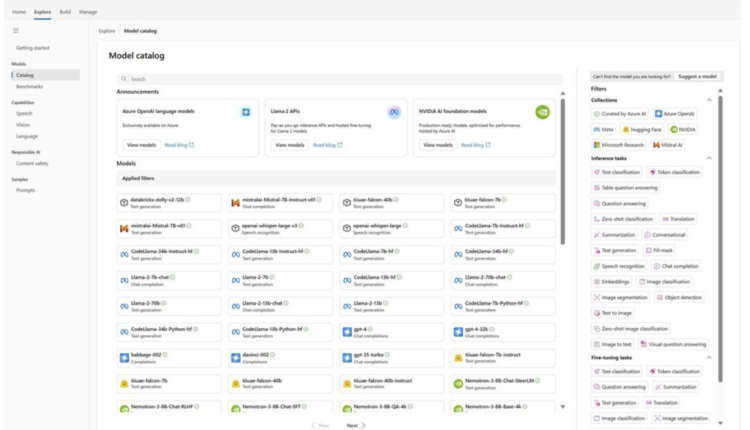In a recent move, Microsoft’s Azure AI platform has expanded its range by introducing two advanced AI models, Llama 2 and GPT-4 Turbo with Vision. This addition marks a significant expansion in the platform’s AI capabilities.
The team at Microsoft Azure AI recently announced the arrival of Llama 2, a set of models developed by Meta, into the Azure AI Model as a Service (MaaS). These include different versions like Llama-2-7b and Llama-2-13b, specializing in tasks such as generating text and completing conversations. Furthermore, these models are now accessible through simplified API endpoints, making it easier for businesses to use without the complexities of managing cloud execution instances.
At the same time, Microsoft unveiled OpenAI GPT-4 Turbo with Vision, an innovative multimodal model that combines language understanding and image analysis. This integration allows the model to analyze images and provide text-based responses to queries, significantly enhancing its capabilities. GPT-4 with Vision is now available for public testing on platforms like Azure OpenAI Service and Azure AI Studio, offering features such as video prompts, object identification in images using text descriptions, and improved optical character recognition (OCR).
Recognizing the need for diverse AI sources, especially following recent developments at OpenAI, Microsoft reiterated its commitment to expanding its AI offerings while ensuring secure and responsible AI governance in the Microsoft cloud. The team emphasized the expansion of fine-tuning capabilities for various models, enabling developers and data scientists to customize models like GPT-35-Turbo, Babbage-002, and Davinci-002 to suit specific needs.
Azure AI’s model catalog has also been enriched with six new models, including Microsoft’s small language models, Phi-2 and Orca 2, each equipped with billions of parameters. These are accompanied by DeciLM, DeciDiffusion, DeciCoder, and Mistral 7B Mixtral 8x7b, catering to diverse requirements in text generation, text-to-picture translation, program completion, and more.
Azure AI Studio now provides benchmark test data in the model’s test section to assist enterprise users in navigating this range of models. This data is a helpful resource, aiding users in making informed decisions when selecting models for specific applications or needs.
Introducing these models coincides with recent leadership changes within OpenAI, prompting Microsoft to stress the importance of diversifying AI model sources to mitigate risks. Despite affirming continued collaboration with OpenAI, this strategic expansion underscores Microsoft’s commitment to broadening its AI offerings and ensuring a versatile range of tools and solutions for its users.
In summary, Microsoft’s recent enhancements in Azure AI, including the addition of Llama 2, GPT-4 Turbo with Vision, expanded fine-tuning capabilities, and the introduction of diverse models, reflect a concerted effort to strengthen its AI offerings, providing users with a comprehensive suite of advanced tools and solutions.

Niharika is a Technical consulting intern at Marktechpost. She is a third year undergraduate, currently pursuing her B.Tech from Indian Institute of Technology(IIT), Kharagpur. She is a highly enthusiastic individual with a keen interest in Machine learning, Data science and AI and an avid reader of the latest developments in these fields.
Credit: Source link


Comments are closed.